By DeJonge Associates, Inc.
DeJonge Associates
Developer of Consumer Pharmaceuticals Packaging and Drug Delivery Systems for some of America's best known brands.
Locked, Controlled Time-Dose Tablet Dispenser
DeJonge Associates has developed a tablet dispenser that makes prescription drugs available in a controlled, timely manner that closely follows the doctor’s orders.
"Approximately one-quarter of patients who are prescribed opioids for chronic pain misuse them, with five to 10 percent developing an opioid use disorder or addiction."
-
University of California Study, Jan. 2020
"Every day in the United States, 41 people lose their lives to prescription opioid overdose."
When the Prescription Becomes the Problem: CDC Rx Opioid Page
This tablet dispenser is designed to reduce prescription opioid addiction. It is not, however, designed for people who already have an opioid addiction. It is designed for patients with legitimate pain-relief needs that require prescription opioids.
Many people suffering from opioid addiction have become addicted due to careless mis-dosing or overuse. This patented dispenser design - available at the pharmacy with a deposit - controls the availability of medication and reduces potential for overuse.
After all tablets have been used as prescribed, the patient returns the unit to the pharmacist to receive a refill; or to retrieve a deposit if the there are no refills left on the prescription.
If the unit is damaged or otherwise tampered with, the patient forfeits the deposit, the prescription is not refilled, and the physician is notified.
The medication cartridge and delivery slide are modular, and can be designed to accommodate a wide variety of tablet shapes and sizes. Overall, the design provides a range of advantages related to consumer usage as well as manufacturing and production processes and integration.
See more dispenser video and illustrations, below. View all of our videos on our YouTube page.
Please contact DeJonge Associates for additional information.
Locked, Controlled Time-Dosed Tablet Dispenser: How it Works, Illustrated*
1. The pharmacist uses a computer to interface with the dispenser via USB or wireless connection. By entering a code the pharmacist sets the unit to dispense tablets at specific time intervals. The pharmacist can also unlock and release the tablet cartridge for filling.

2. The pharmacist loads a filled cartridge into the dispenser.
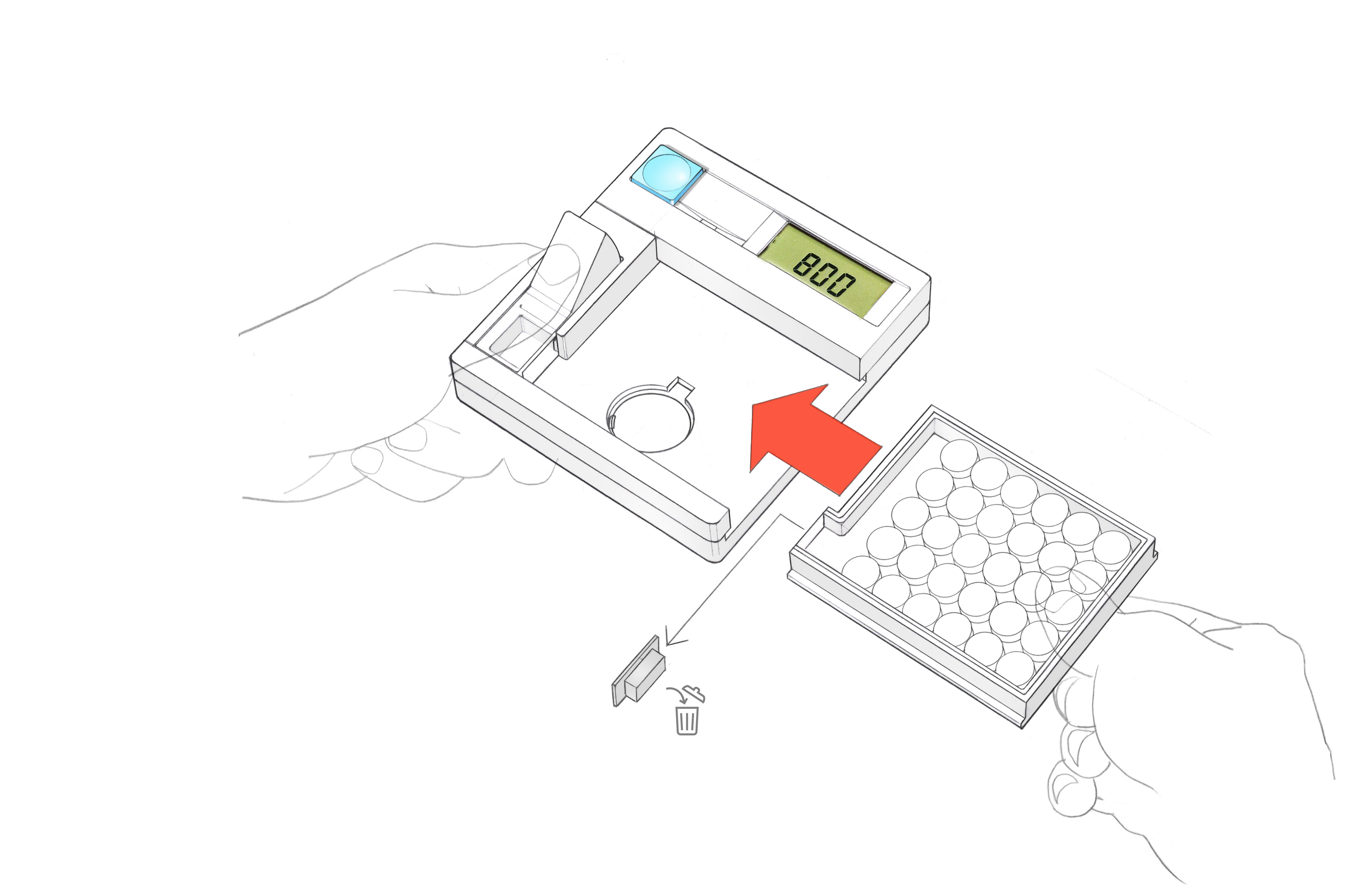
3. The pharmacist instructs the patient on how to use the dispenser.

4. The patient receives the dispenser with both cartridge and dispensing slide locked.
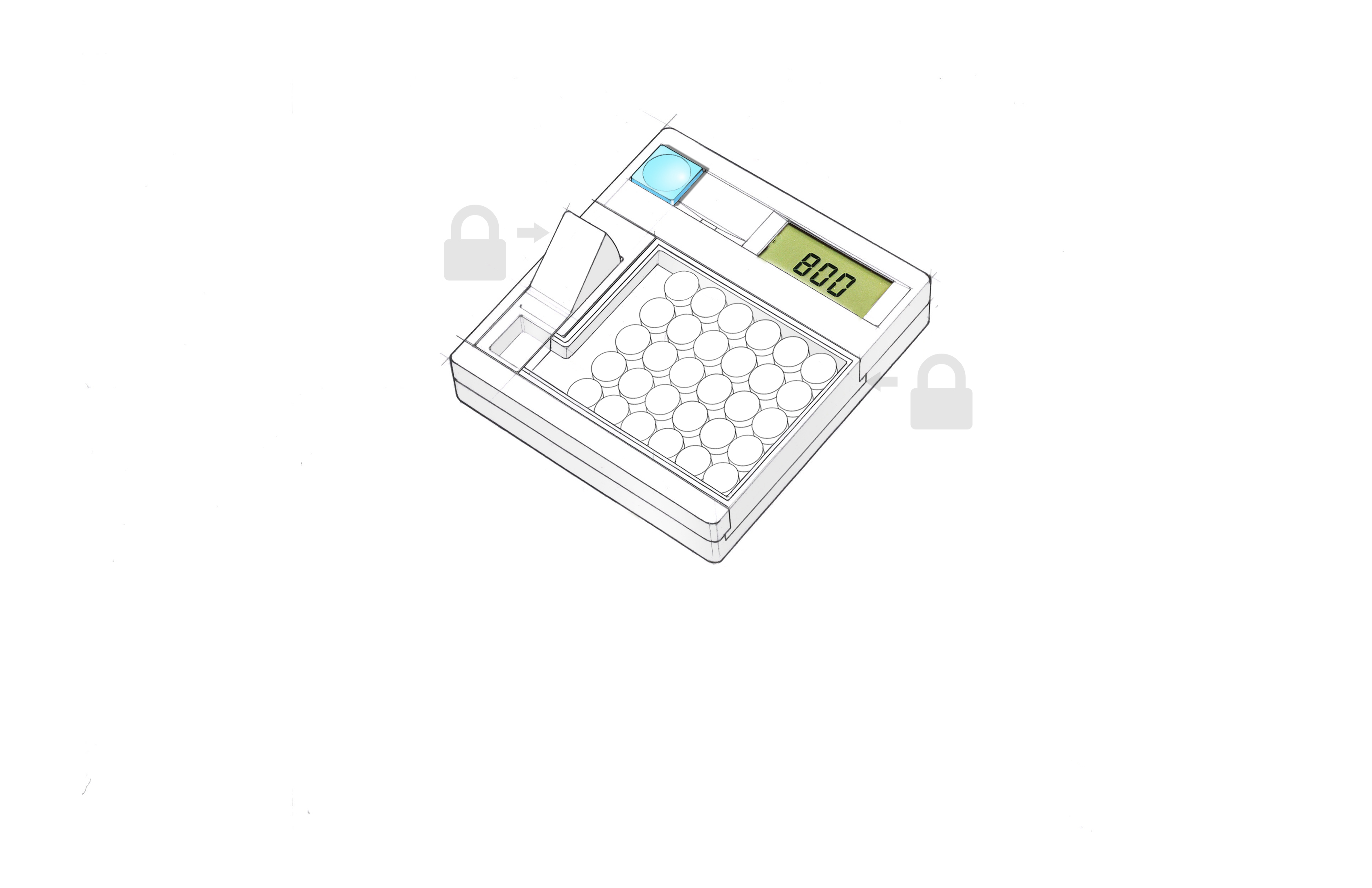
5. The timer counts down to availability of next dose, which is displayed on the unit and the indicator light shows red. At time of availability the display shows 000, at which time the patient may load a tablet into the slide and push the unlock button. The indicator light then turns green and the device unlocks the slide for a single tablet to be dispensed within a period of up to one hour.
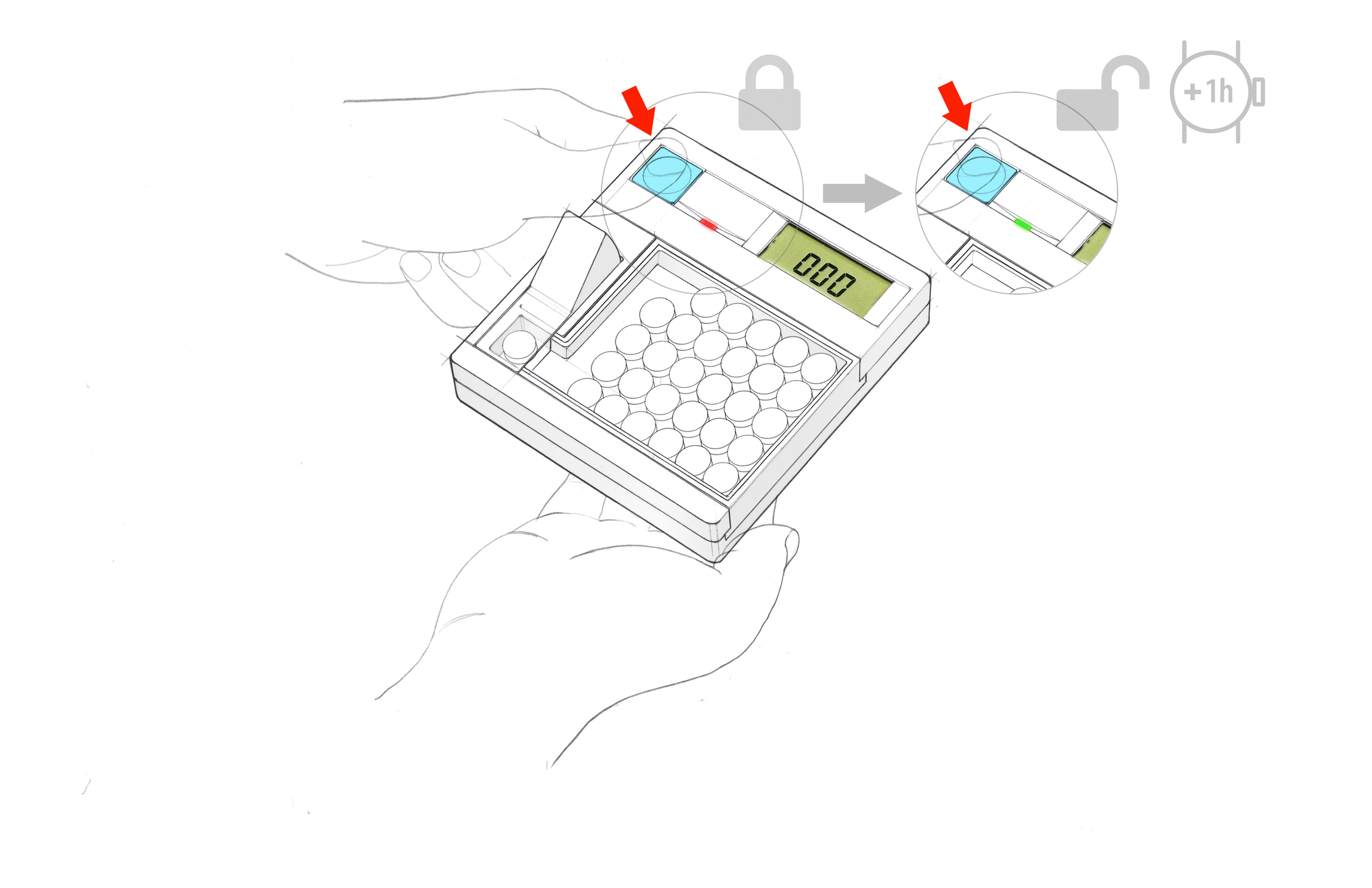
6. The unit is tilted to load a tablet into the dispensing slot. The dispensing slide will not operate without a tablet in this slot.

7. The patient pushes the slide to release the tablet.

8. The timer then automatically resets to the next available dosage time (8 hours shown here) and the slide locks. Please note that only the pharmacist can release the tablet cartridge by using the code and a computer connection.

9. A review of the initial steps by the pharmacist follows...
While using the computer connection the pharmacist can also view data about the how the unit was used, including:
- When each pill was taken
- If a dose was skipped
- Battery life of unit
It is also possible for the pharmacist to unlock the dispenser at initial pick up/presentation, so the first dose can be taken within one hour.
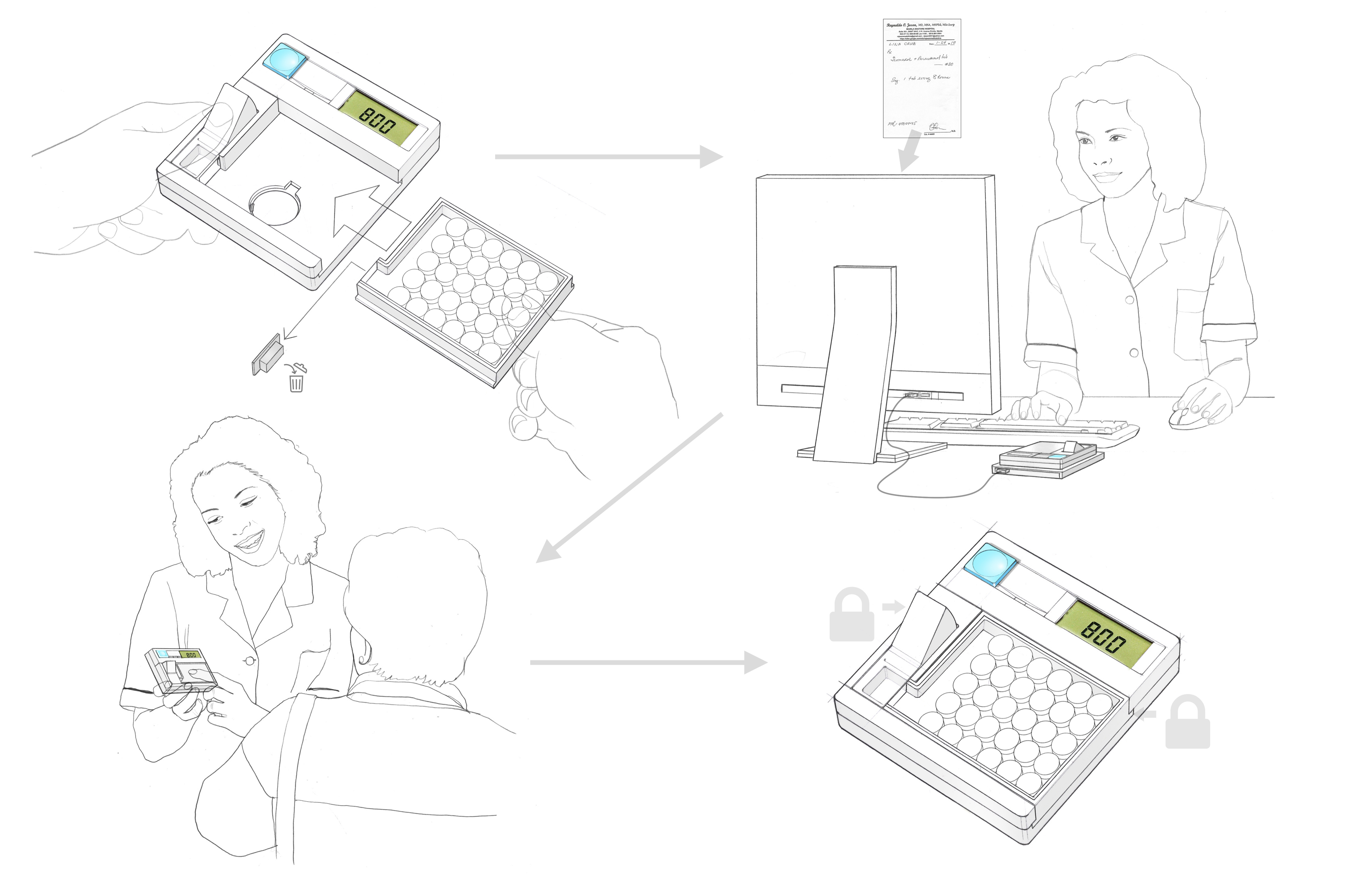
10. A review of how the patient operates the unit...
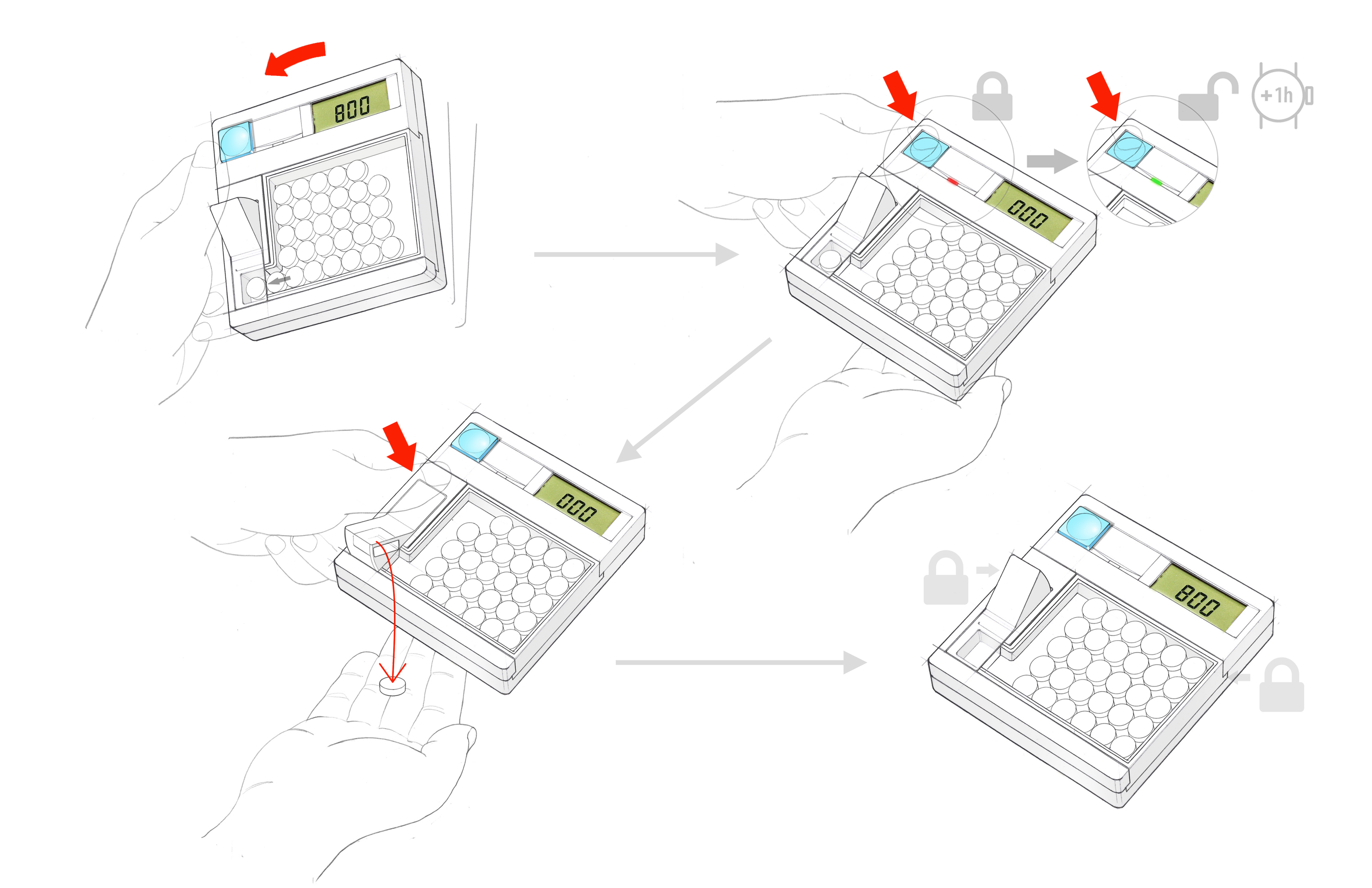
11. After all tablets have been used as prescribed, the patient returns the unit to the pharmacist to receive a refill; if no refills remain on the prescription the unit is returned and the deposit refunded. If the unit is damaged or otherwise tampered with, the patient forfeits the deposit, the prescription is not refilled, and the physician is notified.
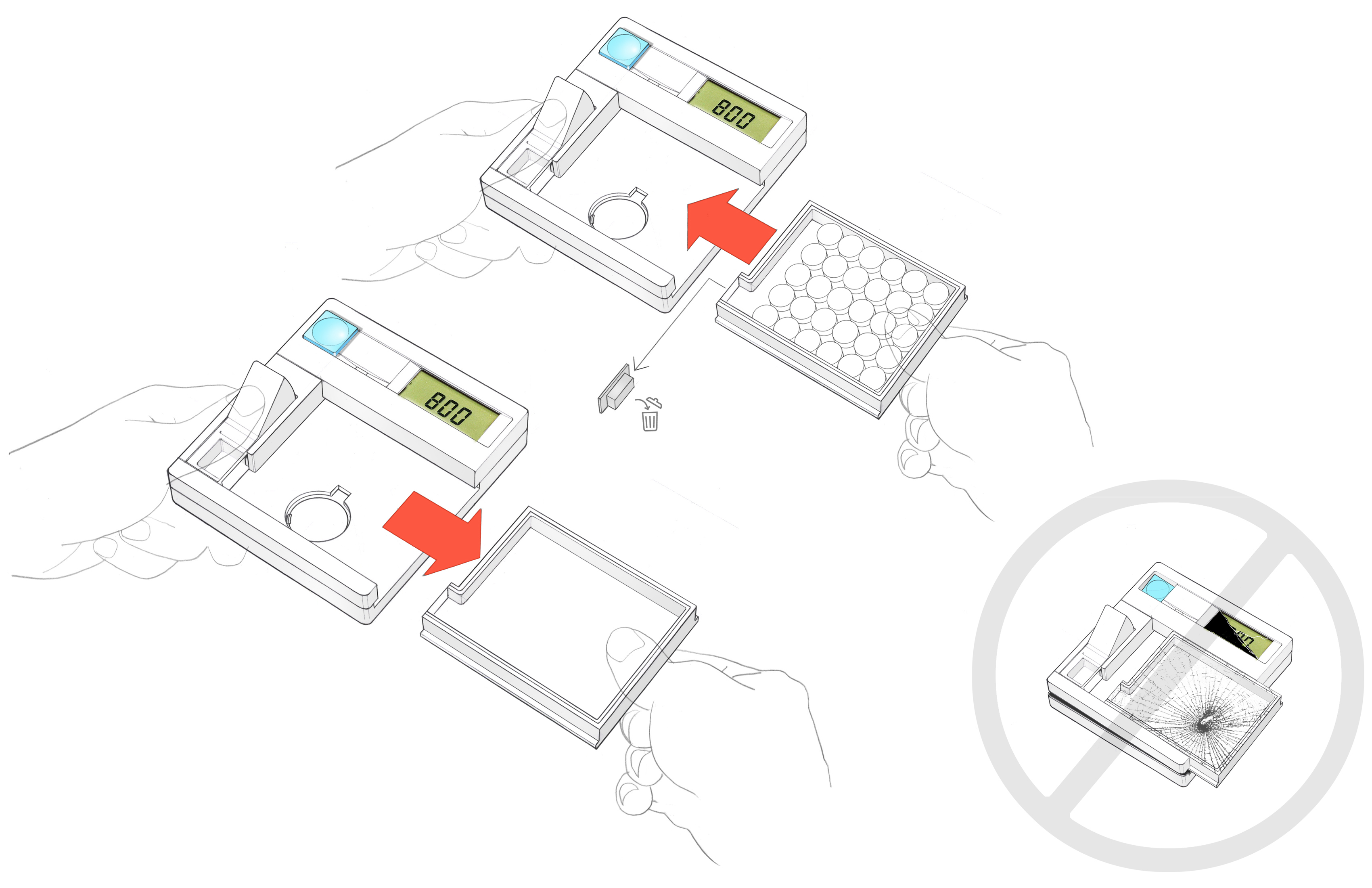
Additional Advantages of the DeJonge Locked, Controlled Time Dose Dispenser:
1. Simple to use. Just follow easy steps to dispense product. Compact and easy to carry in pocket or purse.
2. Sensors allow just one tablet to be dispensed at a time, and the consumer always gets the prescribed dose; never nothing.
3. Can be programmed by Pharmacist to follow physician's orders exactly. Multiple sensors prevent dispensing until correct time.
4. The design meets Child Resistant (CR) requirements.
5. The DeJonge Opioid Dispenser is a working prototype that can be custom-designed to meet the client’s needs, including dispensing different size tablets.
6. Some dispensers require a custom blister pak with a pre-set quantity of tablets. The DeJonge Opioid Dispenser is refillable to any quantity the physician prescribes, from 1 to 40-plus tablets. The functions of the data input/output and display are also customizable.
7. The working prototype of this patented dispenser has been designed by experts in pharmaceuticals packaging, molding and electronics. DeJonge Associates has over 40 years experience in the pharmaceutical packaging design industry, including: engineering, line production, and regulatory environments. DeJonge Associates are also specialists in Child-Resistant packaging designs.
Please contact DeJonge Associates for additional information.
* Illustrations shown above are of an early conceptual prototype. See video and patent page for current version.
